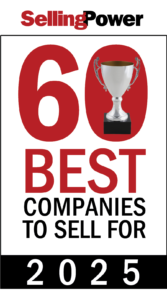Topic: How Do You Handle Major Accounts?
Steve Mitchell is branch sales manager with MSC Corporation.
“We sell industrial supplies and maintenance items to machine shops, large manufacturers, governments and hospitals. We currently have approximately 350 outside-sales associates across the nation.
We have a variety of accounts, some as small as $5,000 per year and some all the way up to 2 or 3 million a year and even more. We have various ways of segmenting and serving our larger customers. We give them a value basket of items, for example, vendor-managed inventory, consolidated billings and free technical seminars.
We have national account managers, or NAMs, to handle larger accounts, and we have government account managers, GAMs, to handle large government accounts. These NAMs and GAMs oversee the representatives in a certain region. They coordinate the efforts and set the reps’ strategies for these accounts. They work closely not only with the outside reps but also with corporate staff in production, in information systems and in our Website and EDI departments.
We don’t have a simple dollar cutoff for national accounts. We classify accounts in three segments, A, B and C. We use a national account model to determine whether an account qualifies for national account treatment. The model is based on volume, profitability and other factors.”
William Thomas is regional sales manager with Volvo Trucks North America.
“We sell trucks primarily to truckload carriers – big trucking companies. A major account for us would be a company that operates 500 units or more. These major accounts can represent 8 to 10 million dollars a year in revenue.
In my position, I work with our dealer organizations. In a smaller account, the local dealer will have more interactions with the customer. But as the account gets larger, I have more interactions with the customer. Typically, the larger the account, the more complex the sale is, and the longer the sales cycle is. Also, the discount structure, trade-in policy and residuals all become more important with the larger accounts.
Generally, we provide the same kind of services to our larger accounts, but they receive more of these services. The vehicles can be sold outright, or they can be leased on a finance or capital lease. There is a huge commitment on both sides of the transaction. We don’t handle maintenance on the trucks, but we do provide soft products. For instance, we provide technical support for the vehicles and vehicle management systems. We also help out with remarketing the vehicle when the customer is through with it. Typically, we take the vehicle back in on trade when the customer purchases another vehicle.”
Mitch Fosmore is regional sales manager for Marco Crane and Rigging.
“We sell crane rentals – the commodity of cranes doing jobs on a sporadic basis, sort of a crane taxi company. If you want to put something on top of your house or move a palm tree, you need a crane. We sell mostly to construction companies and other businesses, usually contractors.
We have five people on our sales team now, and we cover southern California from Oceanside north and from the Arizona border West. In a year, some of our customers will do up to a quarter million dollars in business and some do only $10,000. Our major accounts are the larger ones in terms of dollars.
We don’t have any special systems for dealing with these larger accounts, but we all know who the big players are; we try to make sure they get the services that are due them. And we want to know how they regard us.”
Lee Ehrlich is a sales manager with uniFirst Corporation.
“We are a uniform provider. We rent, lease and sell work apparel and uniforms to just about everybody – service stations, supermarkets, universities, hospitals, manufacturers and so forth. My territory is Long Island and the five boroughs of New York City. I have six people on my sales team, and we are looking for an additional rep now. My team made us the number two location in our company last year.
We just revamped our account policy 60 days ago. Now, an account has to bring in a minimum of $50 per week. In our business a large account is about $500 per week, or about 100 uniform wearers. These are the ones we want to focus on.
These larger accounts probably represent only about 20 percent of our business. The chief difference in handling them is that there is more time spent in rapport building, or seeding the account. You want them to know you are still there when their old contract expires and they are thinking about choosing a new provider. You have to cultivate the account, it does not happen on one, two or three calls. It can take one to five years to cultivate these accounts.
We do a lot of team selling on these large accounts. I go out with the rep, more as a service manager or director. And we have about an 80 percent success ratio in landing these accounts with team selling.
Our company also has national account teams that work on very large accounts that have multiple locations in the U.S. and Canada. These are handled out of our service division in our national headquarters.”<
Get our Enewsletter
Get the latest sales leadership insight, strategies, and best practices delivered weekly to your inbox.
Sign up NOW →